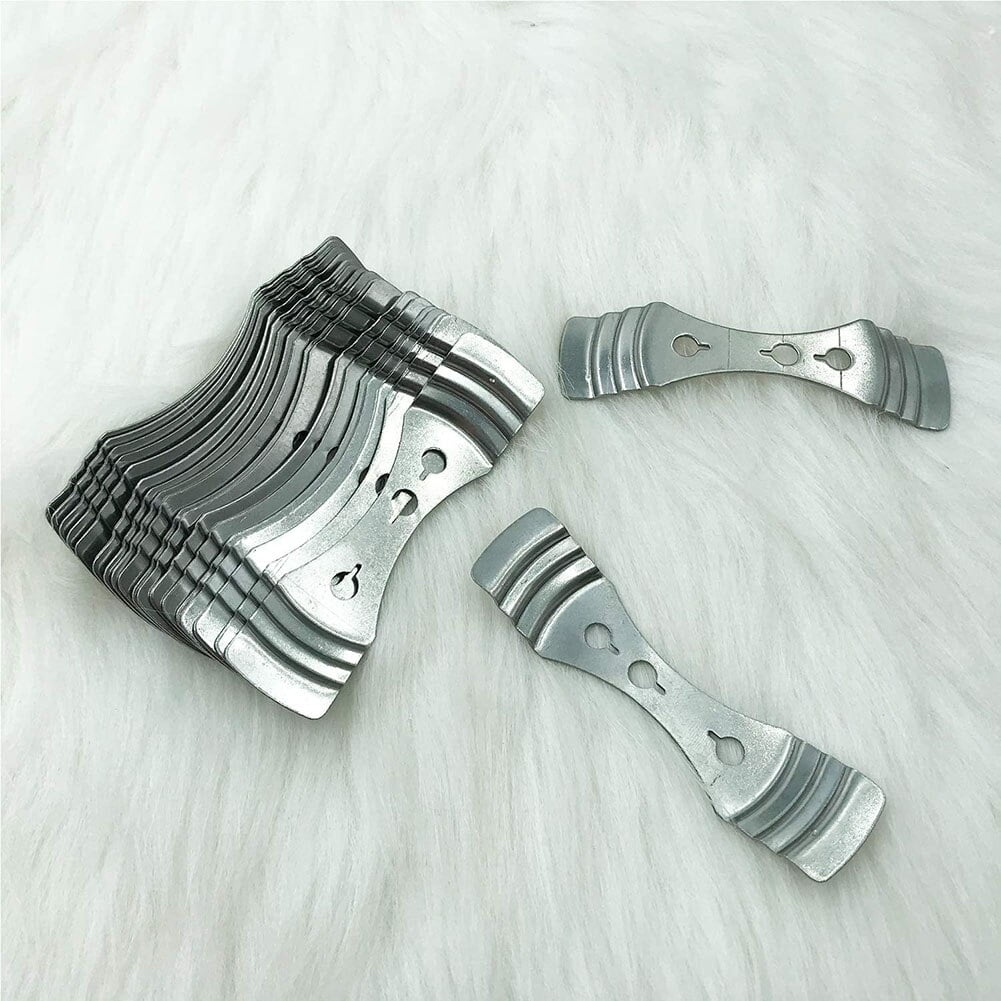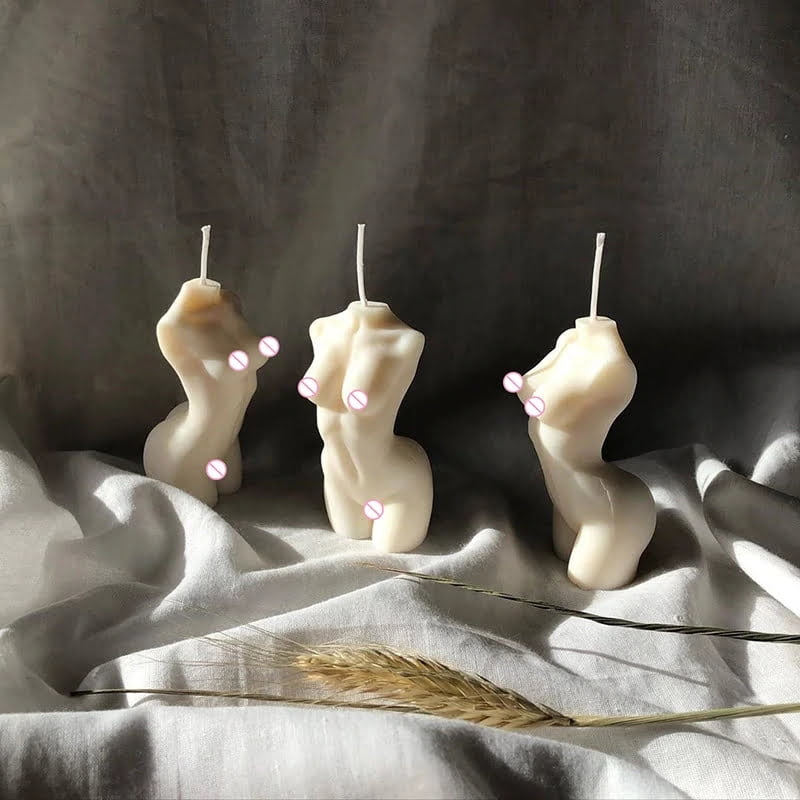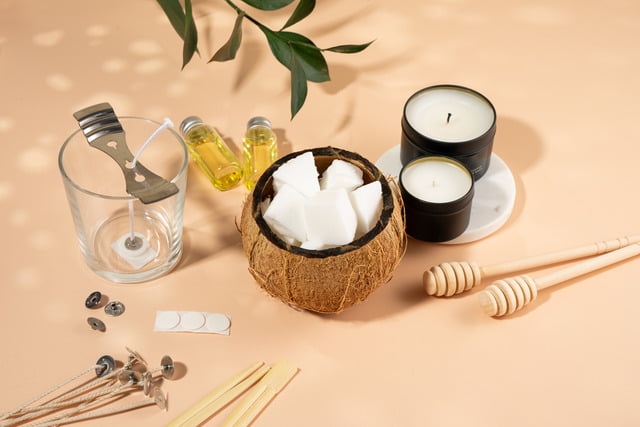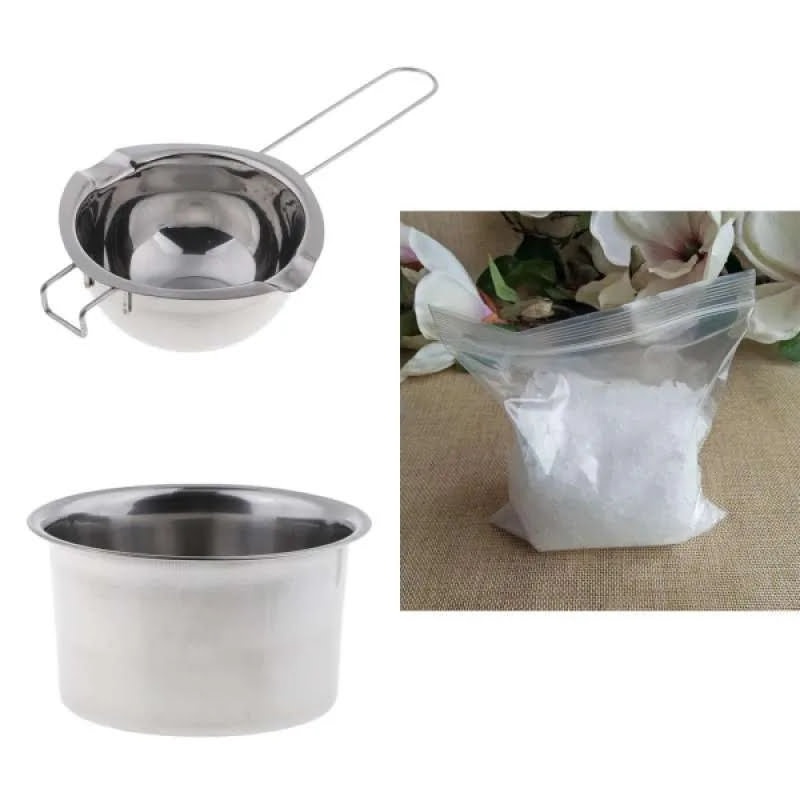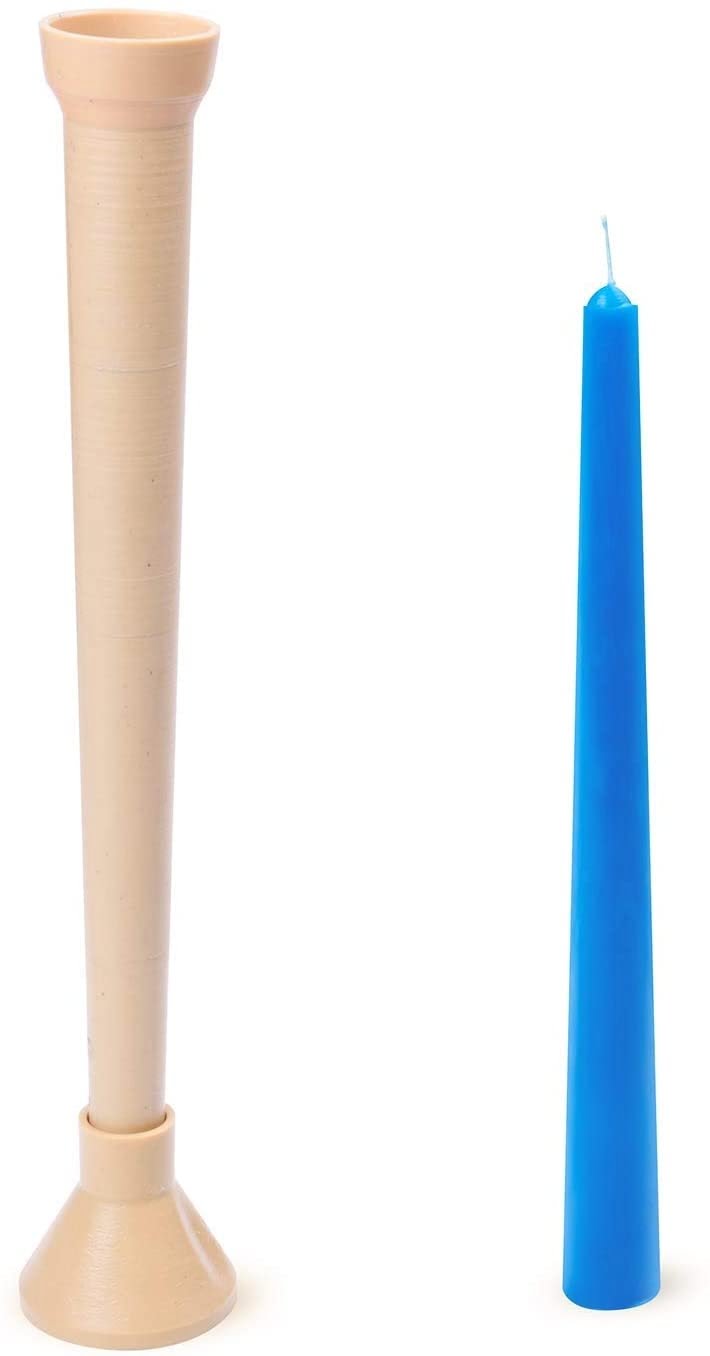Candle making is an art form that requires attention to detail and a combination of different elements to create the perfect candle. One crucial element in this process is choosing the right wick for your candles. The type of wick you use can significantly impact the candle’s burning properties, performance, and overall ambiance.
In this article, we will delve into the world of wick options for candle making. We will explore the importance of selecting the proper wick and how it affects the quality and characteristics of your candle. Understanding the various types of wicks available allows you to make educated decisions based on your specific needs and desired outcomes.
There are several different options when it comes to wicks for candle making, each with its own unique characteristics. We will discuss cotton wicks, known for their classic choice appeal and excellent burning properties. Additionally, we will explore wooden wicks, which provide a distinct crackling sound that creates a cozy ambiance. Finally, we will introduce zinc-core wicks that enhance stability and the overall performance of your candles.
Join us as we navigate through this comprehensive guide to understanding the importance of choosing the right wick for your candle-making endeavors. Whether you are a seasoned artisan or just starting out on your candle-making journey, this information will equip you with knowledge about different wick options to elevate your crafting skills and create exceptional candles that burn beautifully every time.
Different Types of Wicks for Candle Making and Their Characteristics
When it comes to candle making, choosing the right wick is essential for achieving a high-quality and efficient burn. Different types of wicks offer unique characteristics that can enhance the overall performance and aesthetic of your candles.
One popular choice for candle makers is cotton wicks. Cotton wicks are a classic option known for their excellent burning properties. They provide a clean and even burn, with minimal smoke or soot production. Cotton wicks also have good capillary action, meaning they can effectively draw up the melted wax to fuel the flame. This helps to ensure a consistent burn throughout the life of the candle.
Another type of wick that has gained popularity in recent years is wooden wicks. Wooden wicks not only provide a unique and crackling ambience but also offer a longer burn time compared to cotton wicks. The crackling sound adds an extra sensory element to your candles, creating a cozy and comforting atmosphere. Wooden wicks work best in larger diameter candles or those made with soy or coconut wax.
For those looking for enhanced stability and performance in their candles, zinc-core wicks are an excellent option. These wicks feature a zinc core wrapped in cotton fibers, providing extra rigidity and strength. Zinc-core wicks are particularly useful for large or deep containers that require extra support to maintain a steady flame.
By understanding the different types of wicks available, candle makers can choose the most suitable option based on their specific needs and preferences. Whether you’re going for classic cotton, cozy crackling wood, or enhanced stability with zinc-core, each type of wick offers its own set of characteristics that can elevate your candle-making projects to new levels of excellence.
Cotton Wicks
Cotton wicks are a classic choice for candle making due to their excellent burning properties. They have been used for centuries and continue to be a popular option among candle makers. Cotton wicks are known for their clean and even burn, which helps produce a consistent flame and reduces soot and smoke.
One of the advantages of cotton wicks is that they come in various sizes, allowing you to choose the right one for your specific candle project. The size of the wick determines how much fuel is drawn up into the flame, which affects how well the candle burns. It is important to match the wick size with your candle’s diameter to ensure optimal burning and avoid issues like tunneling or excessive smoking.
When selecting a cotton wick, it is essential to consider factors such as fragrance load, colorants, container size, and wax type. These factors can affect how the candle burns and may require a specific type or size of cotton wick. Testing different wicks with small batches can help you determine which one works best with your chosen materials.
To properly use cotton wicks in your candle making process, it is crucial to prime them before lighting. Priming involves saturating the wick in melted wax for better performance and reducing mushrooming. Trimming the wick regularly also helps maintain a steady flame height and prevents carbon buildup.
| Advantages | Considerations |
|---|---|
| – Clean and even burn | – Consider fragrance load, colorants, container size, and wax type |
| – Reduce soot and smoke | – Test different sizes for optimal burning |
| – Available in various sizes | – Prime and trim wicks for better performance |
Wooden Wicks
Wooden wicks have become increasingly popular in the world of candle making for their unique and crackling ambience. These wicks are made from wood, typically from cherry or maple trees, and offer a rustic charm to your candles that cannot be matched by traditional cotton wicks. In this section, we will explore the characteristics and benefits of using wooden wicks in your candle making projects.
One of the key advantages of wooden wicks is the aesthetic appeal they bring to your candles. When lit, these wicks create a soothing crackling sound reminiscent of a cozy fireplace, adding an extra layer of ambiance to any room. This auditory element can enhance the overall sensory experience and create a warm and inviting atmosphere.
In addition to their unique sound, wooden wicks also provide a stronger and more controlled flame compared to cotton wicks. They have a larger surface area which allows them to burn hotter and more evenly, resulting in a cleaner and longer-lasting burn time for your candles. The larger flame also helps to release fragrance oils more efficiently, allowing for a stronger scent throw.
When using wooden wicks, it is important to consider the size of your candle container as well as its diameter. Wooden wicks are available in different sizes ranging from small to large, so selecting the right size for your specific project is crucial. It’s recommended to choose a smaller-sized wooden wick for smaller containers and a larger-sized one for larger containers.
To further enhance the performance of wooden wicks, it is necessary to properly prime them before each use. Priming involves applying melted wax on top of the wood before lighting it. This process helps to ensure that the entire surface area of the wood becomes saturated with wax, allowing for easier ignition and consistent burning throughout.
To sum up, wooden wicks offer a unique crackling sound and improved performance compared to traditional cotton wicks. Their aesthetic appeal adds an extra touch of charm to any candle, creating a cozy and inviting atmosphere.
When using wooden wicks, it is important to consider the size of your container and properly prime them for optimal burning. With these factors in mind, you can create candles that not only look beautiful but also provide a delightful sensory experience for all who enjoy them.
Zinc-Core Wicks
Zinc-core wicks are a popular choice for candle makers looking to enhance the stability and performance of their candles. These wicks consist of a cotton core surrounded by a thin layer of zinc, which provides several benefits.
One of the main advantages of using zinc-core wicks is their increased rigidity and stability. The zinc coating helps to keep the wick straight during the burning process, preventing it from bending or leaning to one side. This ensures an even burning rate and reduces the risk of tunneling, where the candle burns down in a hole instead of evenly across the entire surface.
In addition to stability, zinc-core wicks offer improved burn performance. The presence of zinc helps to slow down the burn rate, resulting in a longer-lasting candle. This can be particularly beneficial for those who want their candles to burn for extended periods or have a slower melt pool formation.
When choosing a zinc-core wick for your candle project, it is important to consider the size and type of container you are using. The diameter and depth of your candle will determine the appropriate wick size needed to achieve optimal burning conditions. It is always recommended to refer to a wick sizing guide or consult with experienced candle makers to ensure you select the right size for your specific needs.
In summary, zinc-core wicks provide enhanced stability and improved burn performance, making them an excellent option for candle makers. Their rigidity helps prevent issues such as tunneling, while their slower burn rate allows for longer-lasting candles. Proper selection and sizing are key factors in maximizing the benefits of zinc-core wicks in your candle making projects.
| Advantages | Description |
|---|---|
| Increased Stability | The thin layer of zinc coating keeps the wick straight during burning, preventing bending or leaning. |
| Improved Burn Performance | Zinc slows down the burn rate, resulting in longer-lasting candles and reduced tunneling. |
| Proper Sizing | Selecting the right size of zinc-core wick ensures optimal burning conditions based on container diameter and depth. |
Deciding the Right Wick Size for Your Candle Project
When it comes to candle making, choosing the right wick size is crucial. The size of the wick directly affects how your candle will burn, including factors such as burn time, scent throw, and even how evenly the wax will melt. To ensure a successful and enjoyable candle-making experience, it is important to take into consideration various factors when deciding on the right wick size for your project.
Types of Wax
One important factor to consider when selecting the right wick size is the type of wax you are using. Different types of wax have different melting points and densities, which can have an impact on how your candle burns. For example, soy wax tends to have a lower melting point compared to other types of wax, so it may require a larger wick size to ensure proper burning.
Container Size and Shape
The size and shape of your container also play a role in determining the appropriate wick size. If you are making candles in small containers or tea lights, you may need a smaller wick that provides a more controlled and consistent flame. On the other hand, larger containers or pillar candles may require bigger wicks that generate more heat to melt the wax evenly.
Burn Rate
Consider how quickly you want your candle to burn when selecting the right wick size. If you prefer a longer burn time for your candles, opt for a smaller wick that will result in a slower burn rate. Conversely, if you want your candles to burn faster or emit a stronger scent throw, choose a larger wick that will produce a bigger flame.
It’s important to note that testing is key when determining the right wick size for your candle project. Experiment with different sizes and keep track of their performance in terms of burn time, scent throw, and how well the wax melts. This will allow you to fine-tune your candle-making process and find the perfect wick size for future projects.
Exploring Alternative Wick Options for Eco-Friendly and Sustainable Candle Making
Candle making has become increasingly popular, but with that comes the need for more sustainable and eco-friendly options. Many candle makers are now exploring alternative wick options that align with their commitment to sustainability. Here are a few alternative wick options to consider for your eco-friendly candle making projects:
- Organic Cotton Wick: An organic cotton wick is a great choice for those who prioritize sustainability. These wicks are made from 100% natural cotton that is grown without the use of harmful pesticides or chemicals. Not only are they environmentally friendly, but they also offer excellent burning properties, creating a clean and even flame.
- Hemp Wick: Another eco-friendly option is using a hemp wick. Made from natural hemp fibers, these wicks are biodegradable and renewable. Hemp wicks burn cleanly and slowly, providing a longer-lasting candle while ensuring minimal environmental impact.
- Wooden Wick: Wooden wicks have gained popularity recently due to their crackling sound reminiscent of a fireplace. These wicks are often made from sustainably sourced wood and provide a unique ambiance to your candles. They also offer a wide range of burn times and can be trimmed easily to adjust the flame size.
When choosing an alternative wick option for your eco-friendly candle making, it’s important to keep in mind the specific needs of your project. Consider factors such as the wax type, candle size, desired burn time, and fragrance load. Conducting small test batches can help you determine which alternative wick works best for your specific requirements.
In addition to choosing eco-friendly wicks, it’s essential to consider other sustainable aspects of candle making such as using natural fragrances, biodegradable packaging materials, and repurposing containers or vessels for candles.
By exploring alternative wick options and incorporating sustainable practices into your candle making process, you can create beautiful candles while minimizing your environmental impact.
Tips and Tricks for Properly Priming and Trimming Your Candle Wicks
Properly priming and trimming your candle wicks is essential for ensuring a clean and efficient burn. By following some simple tips and tricks, you can enhance the performance of your candles and prolong their overall lifespan.
Primimg Your Candle Wicks
Before lighting your candle for the first time, it is important to prime the wick. This involves coating the wick in melted wax, allowing it to become fully saturated before lighting. To do this, simply dip a length of wick into the melted wax until it is completely covered.
Remove it from the wax and let it cool and harden before proceeding. Priming your wicks helps to improve their burn rate and eliminates any potential undesirable scents that may come from an unprimed wick.
Trimming Your Candle Wicks
Regularly trimming your candle wicks is crucial for maintaining an even burn and preventing soot buildup. Before each use, trim the wick to approximately 1/4 inch or as recommended by the manufacturer. Trimming too short can result in a weak flame and poor burning, while leaving too much length can cause excessive smoke and mushrooming.
To trim your wick, you can use specialized wick trimmers or simply a pair of sharp scissors. Make sure to extinguish the flame before trimming to avoid any accidents. After trimming, remove any debris or ash from the candle container with a clean cloth or tissue.
By properly priming and trimming your candle wicks, you can ensure a safer burning experience while maximizing the performance of your candles. These simple tips will help you achieve a cleaner burn with minimal smoke or soot buildup, resulting in longer-lasting candles that provide hours of enjoyment.
Troubleshooting Common Wick Issues in Candle Making and How to Overcome Them
In conclusion, understanding and troubleshooting common wick issues in candle making is essential to ensure the best performance and quality of your candles. By choosing the right wick for your candles and considering factors such as burn rate, diameter, and wax type, you can avoid common problems such as tunneling, uneven burning, and excessive smoking.
One common issue that candle makers encounter is tunneling, which is when the candle burns down the center while leaving unmelted wax along the sides. To overcome this issue, it is important to choose a wick with a larger diameter or to trim the wick shorter to prevent it from tunneling. Additionally, rotating the candle periodically while burning can help distribute heat evenly and prevent tunneling.
Uneven burning is another challenge that can be solved by choosing an appropriately sized wick for your candle. A wick that is too small may not produce enough heat to melt the entire surface of the wax, leading to uneven melting.
On the other hand, a wick that is too large may produce excessive heat and cause the candles to burn too quickly or create sooty smoke. Testing different sizes of wicks and monitoring their performance will help you find the right balance for even burning.
Excessive smoking can also occur if your wicks are not properly primed or trimmed. When priming cotton or wooden wicks, it is important to submerge them in melted wax before using them in your candles. This helps them ignite more easily and reduces smoking. Regularly trimming your wicks to about ¼ inch before each use will also promote cleaner burning and minimize smoking.
In summary, troubleshooting common wick issues in candle making requires careful consideration of factors such as wick type, size, and maintenance. By understanding these issues and implementing proper techniques such as choosing the right size, priming and trimming correctly, you can overcome challenges and create high-quality candles with excellent burning properties.

Welcome to my candle making blog! In this blog, I will be sharing my tips and tricks for making candles. I will also be sharing some of my favorite recipes.

